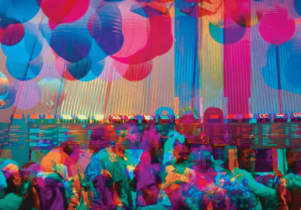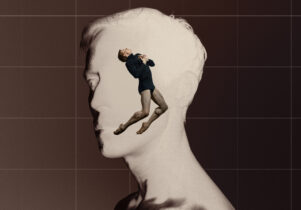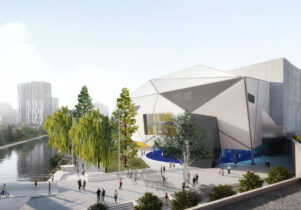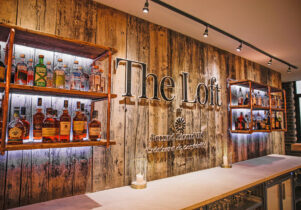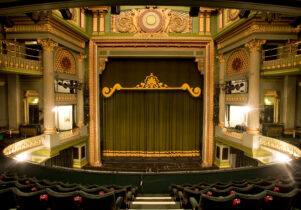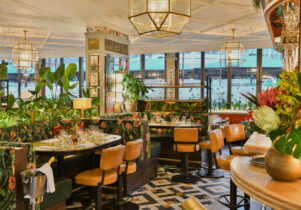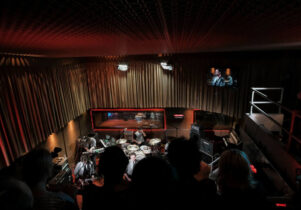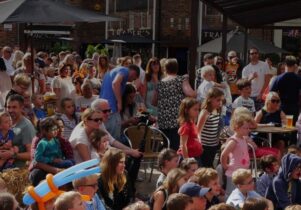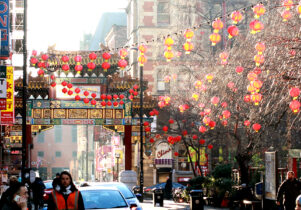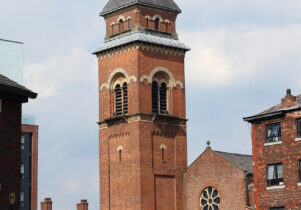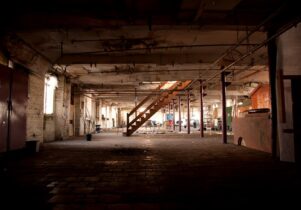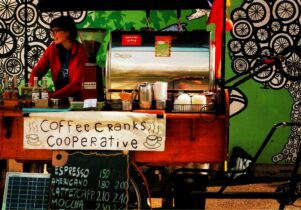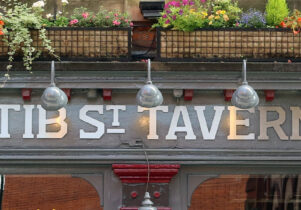Old Granada Studios
Stevie Mackenzie-Smith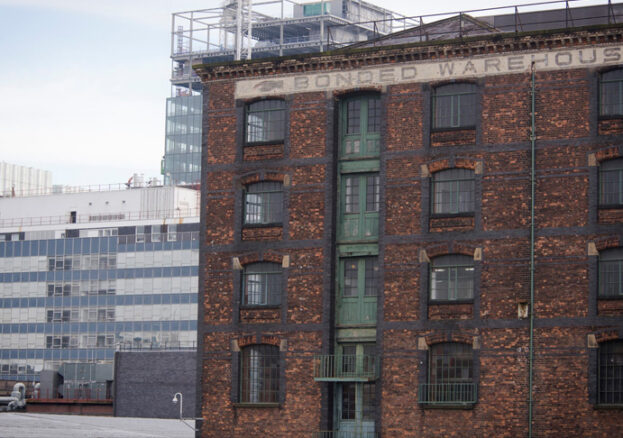
Manchester’s old Granada Studios is an iconic piece of the city’s history and home to Sidney Bernstein’s television empire.
Arriving into Manchester by train, it was once the red neon Granada TV sign that beckoned, marking the heart of Granadaland on the city’s skyline. Today it’s the Beetham Tower that stands out like a glassy tombstone – elevated considerably higher than its neighbours, but without the cosy associations of the old TV studios around the corner on Quay Street. Granada Studios was all hairnets and fags and the back alleys of Coronation street, and Tony Wilson, and The Beatles, who had their first television performance at the studios in 1962. When the iconic Granada TV sign was removed from the studios in 2010, it felt like these tangent associations also disappeared from the city’s urban landscape.
Now that ITV Granada has a new home in MediaCityUK, the studios have, for now, been repurposed as a hub for pop-up markets, food and drink festivals, as well as the Buy Art Fair alongside Manchester Contemporary. Cue an audible sigh of relief from those who feared the unlisted building would be pulled down and thrown into the snapping gnashers of the property development market. Demolition seems unlikely for now, but a plan to turn the area into one of those city centre utopias of multi-purpose living does seem to be on the cards.
Its main glass façade is striped with light grey granite walls, a 1950s Humbug of a building
Built in 1956, Granada Studios was designed by architect Ralph Tubbs, who was also responsible for the Dome of Discovery, a handsome concrete and aluminum dome which sat on London’s South Bank during the Festival of Britain in 1951, and went some way to popularising the Modernist style amongst Brits in the post-war years. In his obituary, published by The Independent, Tubbs is noted as an architectural “herbivore”, rather than a carnivore; he favoured Modernism as a movement concerned with form, precision and an alliance with nature. This instead of a more aggressive, Brutalist style. There’s little in the way of brutalising concrete in Granadaland – instead, Granada House is an unpretentious, eight storey affair, its main glass façade striped with light grey granite walls, a 1950’s mint humbug of a building.
As iconic in status as the studio buildings themselves is Sidney Bernstein, the founder, chairman and immaculately dressed man at the helm of Granada. Old friends with Alfred Hitchcock, he was a wearer of startlingly white soft shirts that gave him an air “vaguely like a Mafia Godfather” – this in contrast to his left-leaning politics. Initially opposed to the notion of commercial television, in 1951 he wrote to Deputy Prime Minister Herbert Morrison declaring, “I think you should know that my company have applied to the Postmaster General for a license to operate a commercial television station or sponsored television. I still think the country would be better off without it. However, if there is to be commercial television in this country, we think we should be in.”
A keen art collector, Bernstein hung his personal collection on the walls of the Granada Studios, with the intention of inspiring creativity among employees. Among the likes of Chagall and Modigliani were portraits of American showman Phineas T. Barnum and Edward R. Murrow, one of America’s greatest journalists, known for his integrity, staunch criticism of Senator Joe McCarthy and infamous broadcast sign-off, “Good night, and good luck.” In 1993, Bernstein bequeathed his fine art collection to the city; the works are now held at the Manchester Art Gallery.
The old Granada Studios have entered an new era – arguably one that profits from culture (and artisan markets) rather than creating it in original form. The building remains an important piece of Manchester’s history; it’s a space that revives memories of busy television productions and of behind-the-scenes glamour – of Coronation Street, Brideshead Revisited and Seven Up! Granada studios is the reminder of a television diet that fed generations.



